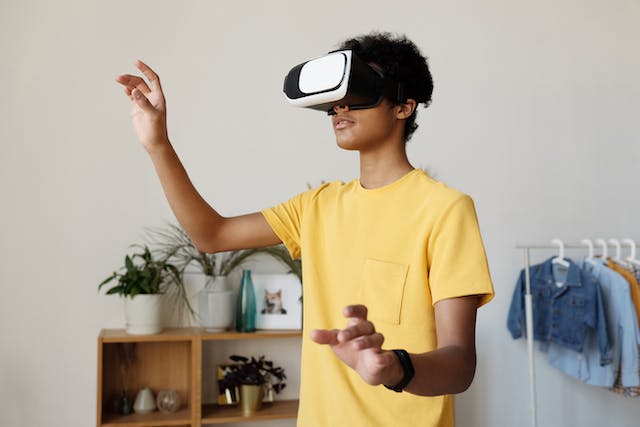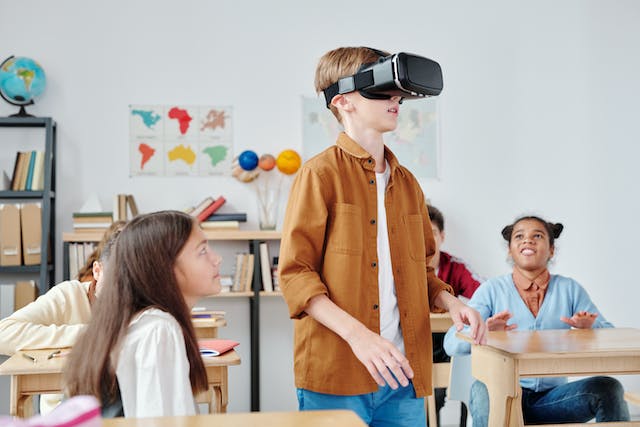The emergence of virtual classrooms is a result of how technology has changed the face of education. Effective communication in virtual classrooms is becoming more and more important as more educational institutions use online learning platforms. Effective virtual communication is crucial for creating a collaborative and interesting learning environment as well as for transferring information. We will look at the essentials of successful virtual classroom communication in this essay.

Transparent Channels of Communication:
The cornerstone of successful virtual classrooms is the establishment of clear communication channels. The platforms and methods utilized for communication, including as email, chat rooms, and video conferencing, should be familiar to both teachers and students. To prevent misunderstanding and make sure that everyone is in agreement, there should be clear standards on when and how to utilize these channels.
Including Multimedia Information:
Multimedia components may be included into the learning process in virtual classrooms. To improve the way they offer material, instructors might make use of multimedia resources, interactive presentations, and visual aids. Incorporating multimedia into instruction not only enhances its dynamic nature but also accommodates a range of learning preferences, guaranteeing that every student can access the content.
Active Conversations:
Encouraging collaborative conversations is essential to maintaining a vibrant and interesting virtual classroom. Teachers should use video conferences, live chats, and discussion boards to get students involved in the learning process. This promotes a collaborative learning environment by allowing for the sharing of ideas and building a feeling of community among the students.
Intelligent Commentary:
In a typical classroom, teachers may use nonverbal clues to determine how well their pupils are comprehending. Real-time feedback becomes even more important in a virtual situation. By using tools like virtual hand raising and instant messaging, students may quickly express their knowledge or uncertainty, which enables teachers to quickly address any issues and provide clarification on subjects.
Creating Proper Netiquette:
In order to preserve a courteous and encouraging online learning environment, one must practice netiquette, or internet etiquette. It is recommended that educators provide unambiguous instructions on appropriate communication etiquette, including appropriate language, tone, and conduct during virtual exchanges. Students benefit from this by feeling more professional and respectful of one another, which creates an environment that is favorable to learning.
Adaptable Timetables for Communication:
Being aware of the many demands that kids have is essential to good communication. Online learning environments often accommodate learners with different schedules and time zones. Teachers need to be accommodating when it comes to communication plans; they should also provide other times for in-person meetings, offer recorded lectures, and permit asynchronous participation. This guarantees that the quality of the learning process is not compromised and that students may access the content whenever it is convenient for them.

Support for Technology Literacy:
There’s a chance that not every student uses online communication resources with the same ease. Support for technological literacy may close this gap and provide students the confidence to successfully navigate the online learning environment. To help students feel comfortable utilizing the tools required for efficient communication, instructors may provide resources, tutorials, and technical assistance.
Fostering a Feeling of Community:
In a virtual classroom, creating a feeling of community is difficult yet necessary for good communication. Teachers may set up online communities where students can interact, work together on assignments, and have informal conversations. Common learning objectives and a feeling of community are fostered via online forums, virtual study sessions, and group projects, among other things.
Techniques for Active Participation:
Promoting involvement is essential to successful virtual communication. Teachers may use a variety of techniques to get students to respond, including asking open-ended questions, holding polls, and adding interactive quizzes. In addition to increasing student engagement, active involvement gives teachers insightful information about how well their students are understanding the subject matter, which helps them adjust their teaching style.
Customized Correspondence:
Effective communication in a virtual classroom requires an understanding of each student’s uniqueness. By addressing students by name, giving them personalized comments, and recognizing their achievements, instructors should make an effort to personalize their interactions. Customization encourages pupils to actively engage in the learning process and builds a feeling of connection between them.
Accepting Inclusion and Diversity:
Virtual classrooms often bring together learners with a variety of experiences, cultures, and backgrounds. Teachers need to be aware of this variety and aggressively encourage participation. The learning process is made richer by fostering an atmosphere where all opinions are respected and heard. Students who experience inclusive communication feel more like they belong and are able to share and learn from one other’s perspectives.
Explicit Guidelines and Expectations:
For there to be good communication in virtual classrooms, it is important to establish clear expectations and norms. The structure of online classes, acceptable communication practices, expectations for assignments, and evaluation standards should all be described by instructors. Having clear rules reduces confusion and promotes more effective communication by making it clear to students what is expected of them.
Using Breakout Sessions:
Smaller group interactions may take place in virtual classrooms during breakout sessions. These sessions may be used by instructors for group projects, conversations, and problem-solving exercises. Breakout sessions enable students to engage with their peers and promote peer-to-peer learning by imitating the small-group dynamics of conventional classes.
Stressing the Need for Digital Literacy:
Digital literacy and effective communication in virtual classrooms are strongly related. Teachers shouldn’t presume that every kid can use the internet and identify trustworthy sources of information with the same level of proficiency. By include elements of digital literacy in the curriculum, educators may assist students in gaining the knowledge and abilities needed for critical thinking, information assessment, and online communication.
Feedback and Ongoing Improvement:
An essential component of good communication is feedback. It is recommended that educators get feedback from students on the virtual learning environment and use this data to inform ongoing enhancements. Consistently evaluating the efficacy of communication tactics, modifying material distribution techniques, and keeping up with technology developments all help to create a dynamic and adaptable virtual learning environment.
In summary:

The creation of an inclusive and stimulating learning environment, flexible planning, and a dedication to this task are all necessary for effective communication in virtual classrooms. Through the use of interactive techniques, open lines of communication, and community building, educators can help students succeed in an online learning environment while overcoming the difficulties associated with virtual learning. The keys to effective communication in virtual classrooms will change along with technology, highlighting the need of keeping up with new trends and best practices in the ever shifting field of education.
Asked Questions (FAQ) about Successful Interaction in Online Learning Environments
1. What makes good communication crucial in online learning environments?
Having effective communication is essential to fostering an inclusive and stimulating learning environment in virtual classrooms. It makes ideas easier to understand, helps students feel more connected to one another, and promotes community among them. Effective communication is essential to the success of online learning.
2. How can educators promote engagement in online learning environments?
By using techniques like open-ended questions, polls, interactive quizzes, and breakout sessions, instructors may promote active engagement from their students. Giving pupils the chance to actively interact with the topic encourages a better comprehension of it.
3. How important is technological literacy in online learning environments?
In virtual classrooms, technology literacy is crucial because it enables students to interact with digital materials, traverse online platforms, and utilize communication tools efficiently. Teachers have to provide assistance and materials that will help pupils become more comfortable and adept at utilizing technology.
4. How can teachers create a feeling of community in online learning environments?
Creating virtual areas where students may interact, participate, and have debates is a key component in fostering a sense of community in virtual classrooms. Virtual study sessions, online discussion boards, and group projects are useful resources for building a friendly learning community.
5. In a virtual environment, how can educators support different learning styles?
By using multimedia information, a variety of teaching techniques, and flexible communication schedules, instructors can cater to a variety of learning styles. It guarantees that the content is understandable and interesting for every learner when different learning styles are acknowledged and accommodated.
6. How important are explicit rules and expectations in online learning environments?
Elucidating standards and norms in virtual classrooms establishes the foundation for productive collaboration. To cut down on uncertainty and provide a disciplined and well-organized learning environment, instructors should spell out expectations for assignments, communication methods, and evaluation standards.
7. How can educators deal with the issue of time zones differences in online learning environments?
Different time zones might be a barrier that instructors can overcome by enabling flexibility in communication times, recording lectures, and allowing for asynchronous participation. This guarantees that students may access course materials whenever it’s convenient for them, regardless of where they are.
8. How can educators encourage inclusivity and diversity in online learning environments?
Encouraging diversity and inclusion necessitates appreciating each student’s own viewpoint. In addition to fostering an inclusive environment and actively encouraging involvement from people with many backgrounds, instructors should also provide material that represents a range of experiences and cultures.
9. What are some efficient methods for providing instantaneous feedback in online learning environments?
Real-time feedback in virtual classrooms may be enabled by means of interactive conversations, virtual hand raising, and instant messaging. With the use of these technologies, students may quickly express their comprehension or concerns, allowing teachers to respond to them instantly.
10. What are some ways that educators may keep enhancing communication in online courses?
By asking students for input, keeping up with technology developments, and making modifications in response to the changing demands of the virtual learning environment, instructors may consistently enhance communication. Virtual education is more successful overall when communication tactics are regularly evaluated and improved.



